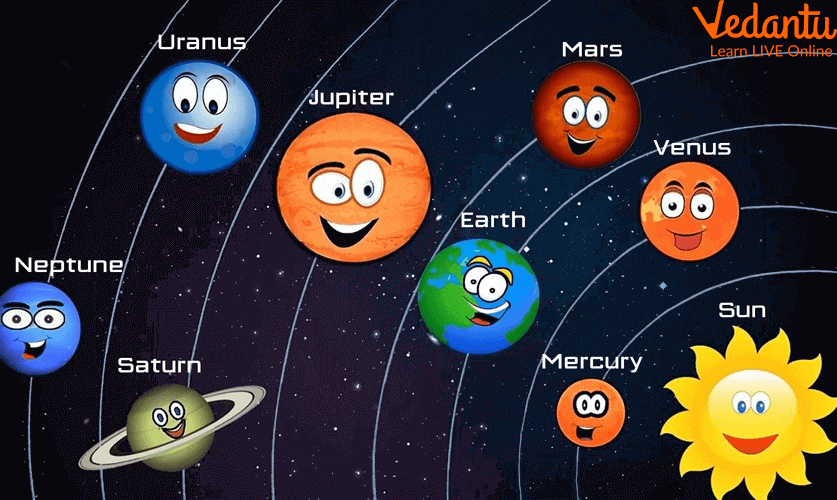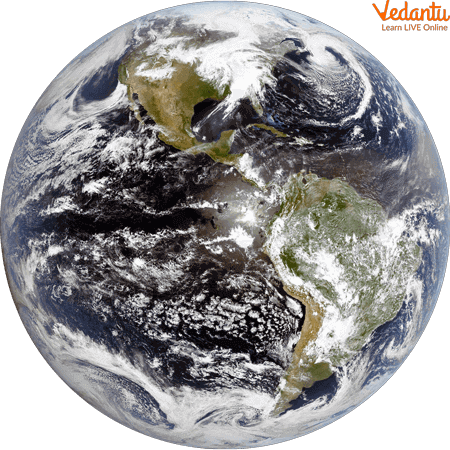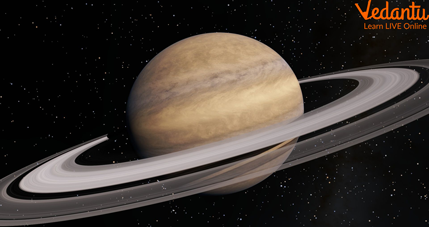




What Are Planets? Definitions, Features, and Amazing Facts
Have you ever wondered what planets look like? Let us study the solar system and all the planets out there. The large objects that orbit around the sun are known as planets. Earth is a small planet in this vast unending Universe. There are seven other planets in the solar system apart from our planet Earth. Our solar system is a part of the galaxy called the ‘Milky Way.
The solar system is also home to the Sun, the Moon, Stars, Meteors, Galaxies, etc. All the planets revolve around the Sun through their orbits. Some planets have their satellites, some planets have rings, some planets are made of gas and some are made of rocks. In this article, we will talk about planets in order for kids and facts about each planet one by one.

Solar System
Mercury
Mercury is the smallest planet in the solar system. Mercury is the hottest planet in the Solar System because it is the closest to the Sun. Mercury takes 88 days to complete one round around the Sun. It is almost impossible to go near Mercury as it is like a huge ball of gas.
Venus
Venus is the second planet in the Solar System from the Sun. It is Earth’s neighbour with Mars. It is the only planet that spins in the opposite direction to all the other planets in the solar system. It is also very hot and the temperature can rise to 450 degrees Celsius. Venus is covered with volcanoes and takes 243 earth days to complete one rotation.
Earth
Earth is the only planet that has life, air, water, human beings, animals, plants, etc. Earth is the third planet and is unique in nature. It takes 365 days to complete one revolution around the Sun. It also takes around 24 hours to finish one rotation which results in day and night. The satellite of Earth is called the Moon. Earth is our home and it is the only planet suitable for life.

The Earth
Mars
Mars is fourth in number to the Sun and is another neighbour of the Earth. It is called the Red Planet because its appearance is red from the outside. The temperature of Mars varies from extremely cold to extremely hot. Mars can be seen from the telescope as a red spot in the universe.
Jupiter
Jupiter is the fifth planet in the solar system and is also called the ‘Jumbo Planet’. It is the largest planet in the solar system and over 300 Earths can take place on its surface. It is made up of gases like helium and hydrogen and is also called a ‘Gas Planet’. Jupiter has 62 moons making it the most number of satellites. Jupiter is a gas giant planet. Galileo gave its first detailed description in 1610.
Saturn
Saturn is the sixth planet and is also the second largest planet in the Solar System. Saturn is made up entirely of gases. It is the only planet that has a ring around it and is called a ‘Ring Planet’. The ring of Saturn is made up of rocks and gases only. It is known for its beautiful rings around its equator.

The Saturn
Uranus
Uranus is the seventh planet and is also the second last planet in the Solar System. Uranus is the coldest planet in the system with an average temperature of -225 degrees Celsius. Uranus spins on its side, unlike all the other planets. Uranus experiences the nights for around 21 years with extreme winters.
Neptune
Neptune is the last planet in the Solar System. It is made up of ice particles only and that is why it is bright blue in colour. Neptune was named after the Roman God of the Sea and Neptune ends the solar family of the Milky Way. Neptune takes the longest time for one single revolution around the Sun as it is the farthest planet in the Solar System. It is the only planet that is not visible to the naked eye from earth. It is more than 30 times larger than the earth.
Summary
This article tells us about the planets in order for kids and also the facts about each planet. The mystery of the solar system is not resolved. Planet is a natural object. The planets in the solar system revolve around the Sun in their own orbits. They have their own satellites. The planets are placed at equal distances in the system. Some planets are extremely hot and some are cold. Some have rings while others do not. Some are made up of gases while others of rock. Among all, Earth is the only planet that has life on it. It is our home. I hope this article is beneficial for you. If there are any doubts please ask in the comments.
FAQs on Planets for Kids: Explore Our Solar System
1. What is a planet, in simple words for kids?
A planet is a very large, round object in space that travels around a star, like our Sun. Think of it as a giant ball that follows a specific path called an orbit. Planets don't create their own light; they shine because they reflect the light from their star. Our home, Earth, is a planet!
2. What is the main difference between a planet and a star?
The main difference is that a star, like our Sun, is a giant ball of hot, glowing gas that produces its own light and heat. A planet is much smaller, does not produce its own light, and is only visible because it reflects light from a star. Planets orbit stars, but stars do not orbit planets.
3. What are the eight planets in our solar system?
Our solar system has eight official planets. In order from the Sun, they are: Mercury, Venus, Earth, Mars, Jupiter, Saturn, Uranus, and Neptune. The first four are rocky planets, while the last four are known as gas giants.
4. Why do planets have different colours?
A planet's colour depends on what its surface and atmosphere are made of. The materials on a planet absorb some sunlight and reflect the rest, which gives it a unique colour. For example, Mars appears red due to iron oxide (rust) on its surface, while Neptune looks blue because of methane gas in its atmosphere.
5. Which planet is known as the 'Morning Star' or 'Evening Star'?
The planet Venus is often called the 'Morning Star' or 'Evening Star'. It's not a star, but it shines very brightly in the sky shortly after sunset or before sunrise because its thick clouds are excellent at reflecting sunlight.
6. Why do all the planets go around the Sun and not fly away?
Planets orbit the Sun because of an invisible force called gravity. The Sun is the most massive object in our solar system, so its gravitational pull is extremely strong. This force constantly pulls the planets towards it, preventing them from flying off into space and keeping them in a stable path, or orbit.
7. What makes Earth so special compared to other planets?
Earth is unique and special because it has all the perfect conditions for life as we know it. Key reasons include:
- Liquid Water: Earth is the only planet with vast oceans of liquid water on its surface.
- Protective Atmosphere: Our atmosphere has a rich mix of oxygen for breathing and protects us from the Sun's harmful radiation.
- Ideal Temperature: Being in the 'Goldilocks Zone', Earth is not too hot and not too cold, allowing water to remain liquid and life to thrive.
8. Are all planets solid and rocky like Earth?
No, planets in our solar system come in two main types. The inner planets — Mercury, Venus, Earth, and Mars — are called terrestrial or rocky planets because they have solid surfaces. The outer planets — Jupiter, Saturn, Uranus, and Neptune — are called gas giants. They are mostly made of huge amounts of gas and liquid, with a small, potentially rocky core deep inside.
9. Why isn't Pluto considered a planet anymore?
Pluto is now classified as a 'dwarf planet'. In 2006, scientists set three rules for an object to be a planet: it must orbit the Sun, be large enough to be round, and have 'cleared its orbital neighbourhood' of other large objects. Pluto meets the first two criteria but fails the third because its orbit is full of other objects in the Kuiper Belt. That's why it was reclassified.









